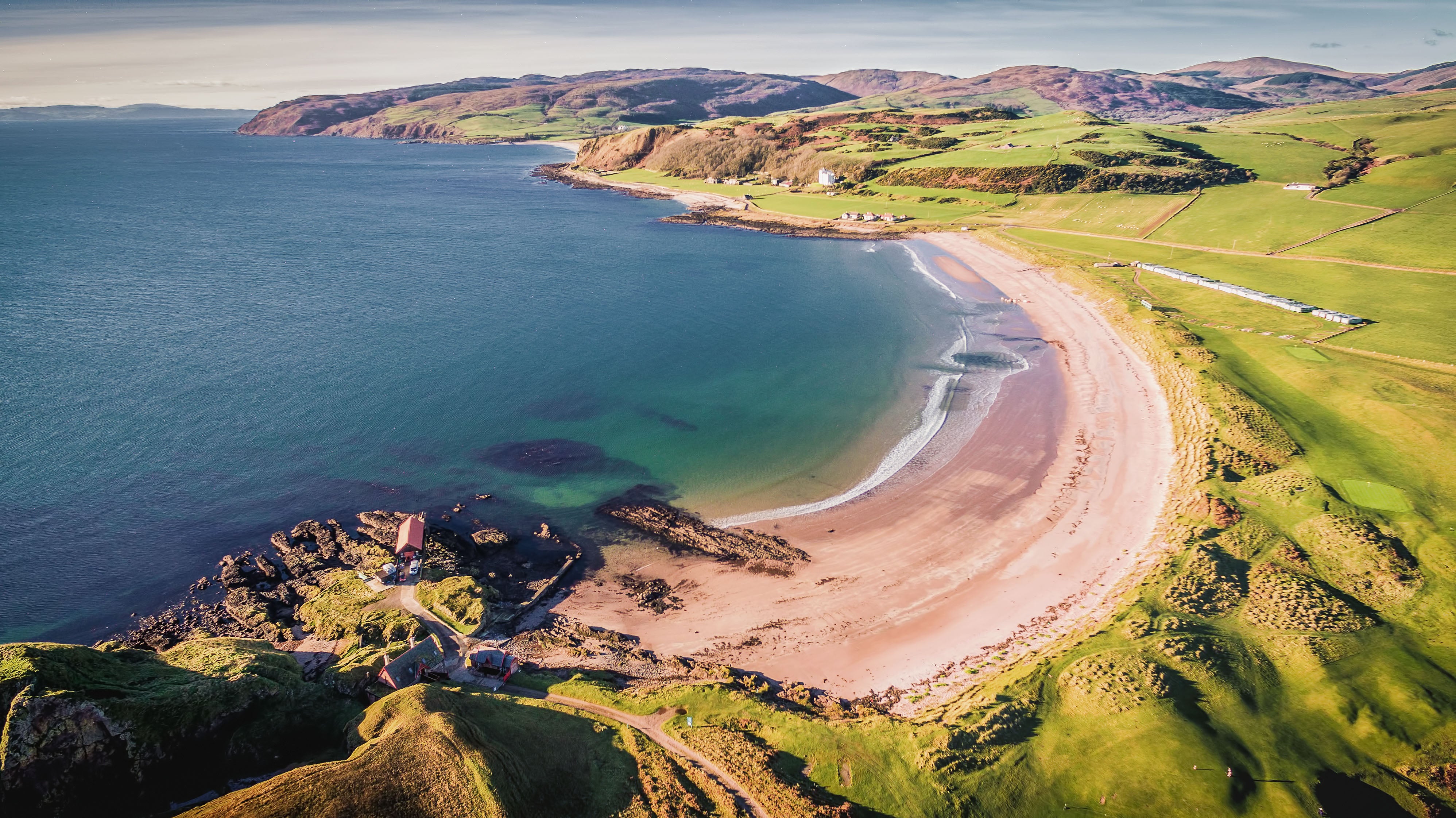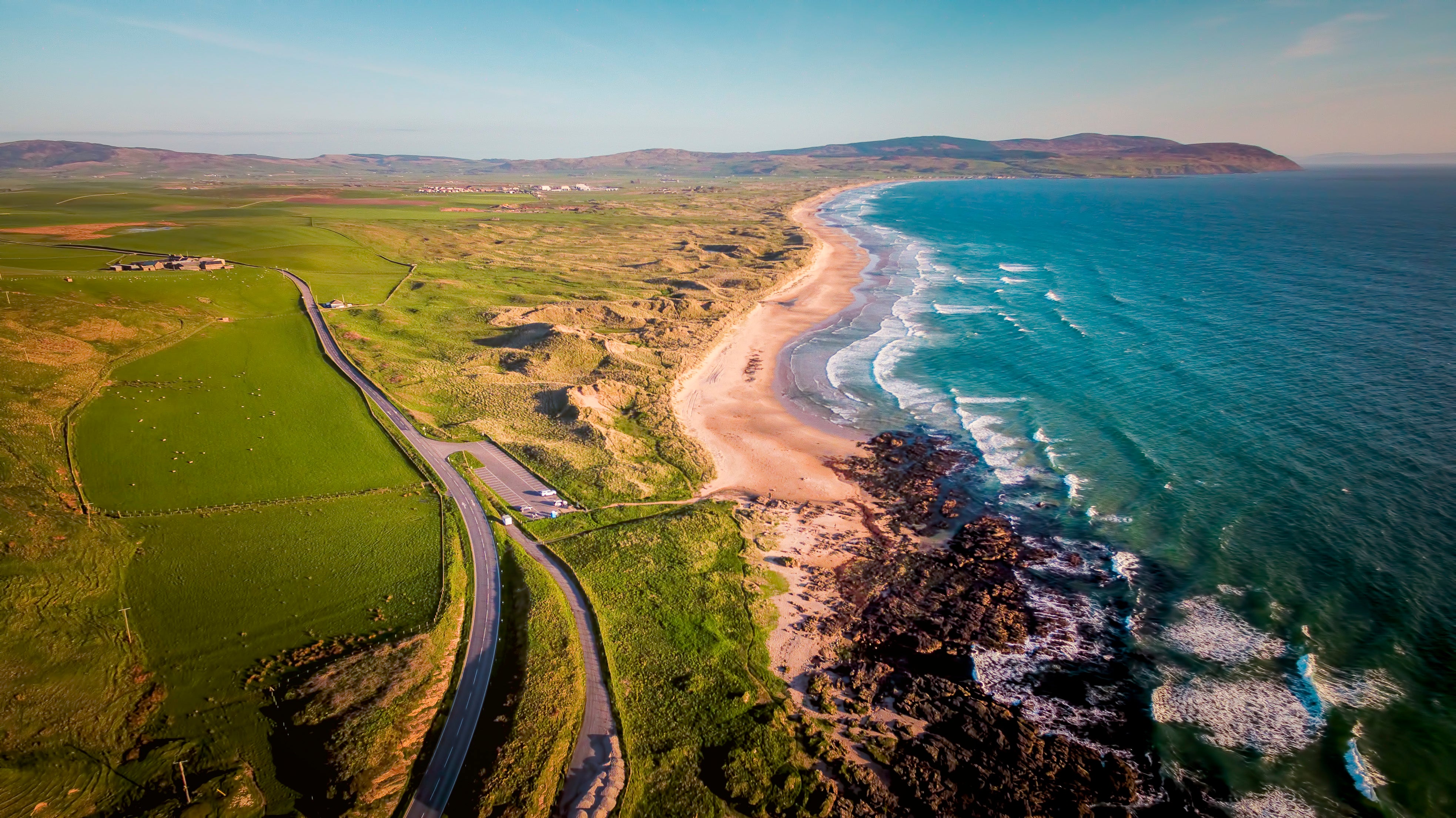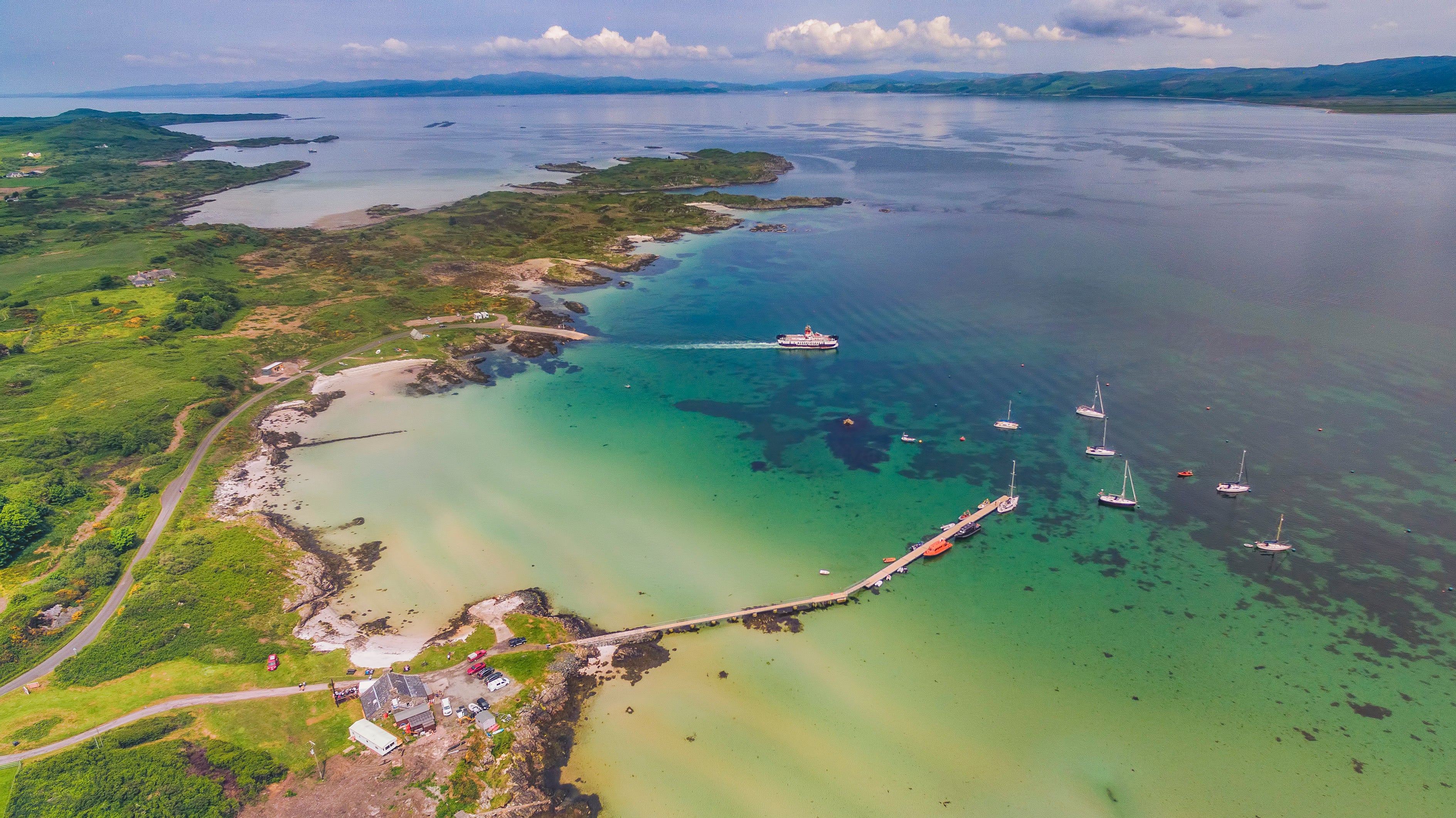The Independent's journalism is supported by our readers. When you purchase through links on our site, we may earn commission.
Kintyre 66: Scotland’s not-so-long and winding road
Forget the North Coast 500; the UK’s newest driving route is the road trip you need right now, writes Mike MacEacheran

Archie Macmillan, 75, a trawler fisherman from the age of 15, is almost in the dark in the 100-year-old Kintyre Smokehouse in Campbeltown, having just finished kilning the morning’s kippers. Next up are batches of salmon, mussels, scallops and halibut – all sent to market in Glasgow, Edinburgh and beyond – and, as he sniffs the air, he busies himself while the smoky, oak-cask cure is perfected.
“This was harvested yesterday, but we’ll leave it on ice for about 35 hours,” he says, candidly, turning over a side of salmon in bear paw hands. “You don’t rush it. It needs to be treated slowly. Anyway, what’s the hurry these days?”
One distinct pleasure of holidaying at home this year is becoming familiarised with places you’d never thought of visiting before – and Kintyre isn’t part of Scotland’s usual travel programme. This is a rarely-visited land of farms, distilleries and smokehouses, untarnished by a regular influx of stop-and-go tourists. This is a place of holy peace and quiet. Everyone wants to drive north from Glasgow, but you take the winding road south to Kintyre because no one else does, and here you can feel the wildness of Scotland’s Atlantic coastline at its most undisturbed.

Now there’s a new way to see it: the Kintyre 66, or K66 for short. Launched in April 2020 after a series of Covid delays, the 66-mile loop around Scotland’s most southwesterly peninsula reveals a greatest hits of sorts of the Scottish countryside, but without the chaotic hum of the North Coast 500. There are the same butterscotch sands and seashell-strewn beaches; the same hard-to-reach islands and remote villages; the same heightened emotions from driving roller coaster single track; and the same herds of sheep migrating across the road. The clincher? No heavy traffic.
For quiet escapism, I’m travelling solo and start at a slow tempo on the road south down the peninsula’s eastern flank, an unhurried transition from Tarbert’s flag-festooned harbour to the extraordinary Kilbrannan Sound coast. Granite-faced Arran fills out the passenger-side windows from across the sea and the lonely road pitches and plunges towards the sands of Carradale Bay. With every mile, the scenery improves.
Kintyre exists in its own bubble – it’s more island-like than many places on the Scottish west coast
With only one road to follow on a clockwise loop to Campbeltown, your satnav is redundant. Or, as Niall Macalister Hall puts it, when we meet at the Beinn an Tuirc distillery on Torrisdale Estate: “Kintyre exists in its own bubble – it’s more island-like than many places on the Scottish west coast.”
Seeing huge potential in the K66, Hall has recently opened a gin school and cafe at the distillery and three glamping cabins are poised to launch in time for next spring. “Kintyre has often been described as Scotland’s road to nowhere, but it’s wilder and more enterprising than most people think.” Another thing that can’t go without saying: his gin is terrific.

Driving Scotland’s longest cul-de-sac does not mean that you are restricted to tarmac. There are plenty of opportunities to hop off the road, and so from Carradale I discover Saddell Bay, which makes a good case as Kintyre’s most beautiful beach. It is an arc of sand so lovely that the peninsula’s most famous landlord farmer, Sir Paul McCartney, shot the video for Mull of Kintyre here. Backed by the toothy topography of Arran across the swells, the beach is as lyrical as the bagpipe-laden song. Then I carry on south to the dramatic, whisky-scented shorefront of Campbeltown for a night of quay-to-kitchen fish tacos at the Ardsheil Hotel. I’ve had worse in the Caribbean.
While Campbeltown is all about food and drink – it’s also home to Glen Scotia and Springbank, two of the world’s most celebrated distilleries – southern Kintyre’s other highlights include a circuitous journey to a lighthouse overlooking the Mull of Kintyre itself, as well as more beaches, caves, sea cliffs and bird-spotting oohs and seal-confronting aahs.
Arriving into Machrihanish on the wave-beaten Atlantic coast, I hear a dull thwack, then the whoosh of a golf ball whizzing down a fairway. In all seasons, the air of the tiny community hums with swingers and surfers, and as a setting for socially distanced sport, locals should make more of a fuss of it. For those who make the effort to come, this is very good news.
“Our geography is our advantage,” says John Beveridge, who runs Dunlossit House, a quirky guesthouse next to the clubhouse. “We have worries that the K66 might change Kintyre, but hasn’t life now changed for everyone?”

There are plenty more life-affirming moments on Kintyre’s west coast, but my high point comes on the community-run Isle of Gigha, one of four outlying islands in the Southern Hebrides that tempt you further out into the Atlantic. It has rum-advert palm trees and a tropical, Gulf Stream location, with tombola beaches, terrific shoreline walks, and an implausibly lovely boathouse serving halibut and oysters on the sand. There is one hotel, one pub and one ferry – its shield and safety net in times like these.
I leave the car for the 20-minute ride across to Gigha’s jetty and bask in a moment that I’ll replay over in my mind in the weeks to come. What could be better than to gaze out on a sunlit panorama absorbing all of Kintyre, the Southern Hebrides and the distant blur of Ireland, with a feeling of space and freedom and the sea shimmering deep and still? Not much, if you ask me.
Travel essentials
Staying there
Doubles at the Ardsheil Hotel, from £99, B&B. Doubles at the Argyll Arms, from £85, B&B.
More information
Gin tastings and tours at Beinn an Tuirc, from £10. The Boathouse on Gigha serves mains from £12. A return ticket to Gigha with Calmac costs from £5.60.
Mike MacEacheran travelled as a guest of Explore Kintyre and Wild About Argyll
Join our commenting forum
Join thought-provoking conversations, follow other Independent readers and see their replies
Comments
Bookmark popover
Removed from bookmarks